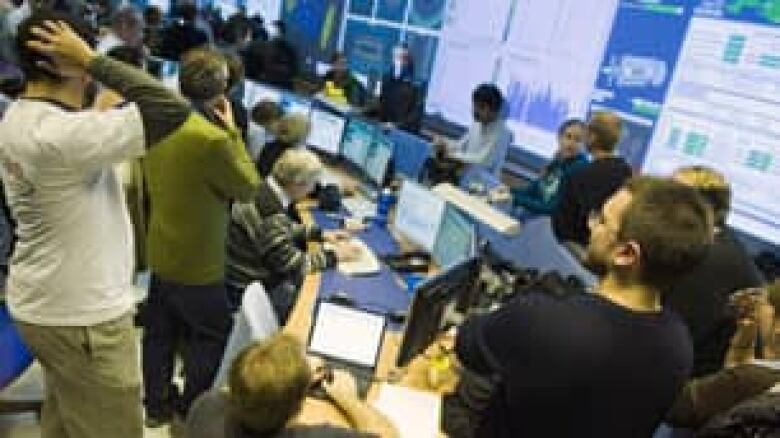Large Hadron Collider's 1st collisions recorded
Researchers at the Large Hadron Collider successfully smashed together two beams of protons in the machine's particle accelerator for the first time on Tuesday.

The energy of the proton beams was increased from 450 billion electron volts to 540 billion over the weekend, said James Gillies, spokesman for the European Organization for Nuclear Research, known as CERN.
That's still a fraction of the power capabilities of the Large Hadron Collider.
"They set in process the procedure to ramp the machine up to the 1.2 TeV [trillion electron volts] that we want to get to this year," Gillies said.
That energy level would make the LHC the most powerful particle collider in the world. The Tevatron at the U.S. Department of Energy's Fermilab near Chicago operates at one trillion electron volts.
The European collider is intended to eventually collide proton beams at an energy of seven trillion electron volts.
The first experiments in the LHC are scheduled to take place in early 2010, when researchers will smash subatomic particles into each other at high speeds in order to break them down and allow the discovery of smaller, more fundamental particles.
Uncovering laws of the universe
The collider is housed in a 27-kilometre tunnel 100 metres underground, forming a ring that straddles the Franco-Swiss border on the outskirts of Geneva.
It is expected to be the most powerful tool yet for physicists hoping to uncover the secrets behind the laws of the universe, both on the tiny scale of quantum mechanics and the huge domain of galaxies and black holes.
In particular, the LHC will look for evidence of the Higg's boson, a subatomic particle predicted to exist based on physicists' current understanding, but never observed. The Higg's particle is supposed to impart mass to other particles.
The collider has been plagued with problems, most recently a power outage blamed on a piece of bread dropped by a passing bird.
In October, a man reportedly employed at CERN was one of two brothers arrested in France for suspected al-Qaeda links.
In September 2008, an electrical connection in the collider's magnets melted, causing a tonne of super-cooled liquid helium to leak into the tunnel.
With files from The Associated Press












_(720p).jpg)


 OFFICIAL HD MUSIC VIDEO.jpg)
.jpg)



























































































